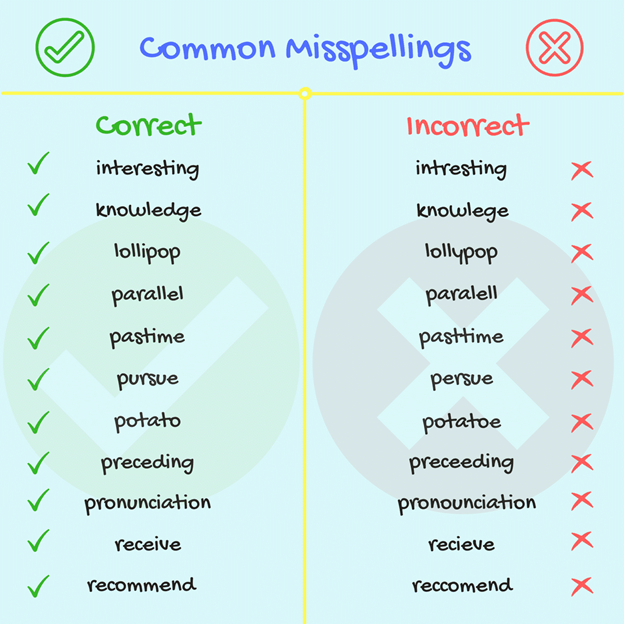Hãy nhập câu hỏi của bạn vào đây, nếu là tài khoản VIP, bạn sẽ được ưu tiên trả lời.

Ựa!!![]() Bà ko dịch cho người ta lun đi chớ bắt lên google dịch ,bà có biết bà bắt người ta như vầy thì mất thời giờ của người khác ko hử???????????????????????????
Bà ko dịch cho người ta lun đi chớ bắt lên google dịch ,bà có biết bà bắt người ta như vầy thì mất thời giờ của người khác ko hử??????????????????????????? ![]()

Dear Peter, I am a student (1)in grade six (2)in a school in Hanoi city. This year, I am twelve (3)year old. I live in a house with (4)me parents and my brother and my sister. It is a beautiful house. I go (5)at school with my friends every morning. I listening to music.(6)I favorite subject is English.(7) On the weekends I often go out with (8)his friends. Sometime, we go to the cinema and go for a walk. At school, we (9)playing many games. They are very funny. In our lessons, (10)they learn about animals and people in the world. It is interesting. What about you? Write me soon. => (1).at (2).at (3).years (4).my (5).to (6).My (7).At (8).my (9).play (10).we | 0. at |
V. Read the passage carefully and answer the questions (Đọc kĩ đoạn văn sau và trả lời câu hỏi):
David and Lucy live in London, in England. They have a big house near a park. There are three bedrooms and two bathrooms in their house. David and Lucy have two children: a boy and a girl. David works in a bank and his wife is a doctor. They usually leave home at eight o'clock. Lucy drives to school with her two children. Then she drives to works at the hospital. In the evening, Lucy always cooks dinner. After dinner, they sometimes watch TV.
1. Where do David and Lucy live ?
=> They live in London, in England.
2. Is their house near a hotel?
=> No, it isn't.
3. What does Lucy do?
=> She is a doctor.
4. What time do they leave home ?
=> They usually leave home at eight o'clock.
5. What do they sometimes do after dinner?
=> They sometimes watch TV after dinner.

6. I know I don't express myself clearly sometimes. (mk ko chắc lắm)
7. The defence made an enormous contribution to the team's success.
8. No sooner had Sandy won the race than she began training for the next one.
9. A police car has drawn up outside.
10. Can you give me a hand with the decoration? (mk ko chắc lắm)

Mọi người đều có sở thích riêng của họ. Và sở thích của tôi là vẽ. Tôi nghĩ cuộc sống của tôi sẽ thật tẻ nhạt nếu không có bức tranh. Tôi bắt đầu học vẽ khi mới 7 tuổi. Người nhận ra tài năng hội họa của tôi là cha tôi. Bố đã gửi tôi đến các lớp học vẽ ngay sau đó. Với năng khiếu bẩm sinh và sớm được tiếp xúc với hội họa nên năng khiếu vẽ của em hơn hẳn các bạn cùng trang lứa. Tôi sẽ vẽ lại những điều thú vị mà tôi gặp hàng ngày. Khi có thời gian, tôi sẽ vẽ chân dung những người tôi yêu quý và tặng họ. Mọi người đều yêu thích những bức tranh tôi vẽ. Vẽ tranh giúp tôi cảm thấy mất hứng thú và mệt mỏi. Tôi có thể ngồi cả ngày trong phòng và vẽ bất cứ thứ gì mình muốn. Vẽ tranh giúp tôi giải tỏa căng thẳng và yêu đời hơn. Nhìn thấy những màu sắc rực rỡ khác nhau khiến tôi cảm thấy như cuộc sống của tôi ngập tràn màu sắc. Hội họa là một phần của tôi. Tôi nghĩ tôi sẽ theo đuổi nó cho đến cùng.
Mọi người đều có sở thích riêng của họ. Và sở thích của tôi là vẽ. Tôi nghĩ cuộc sống của tôi sẽ thật tẻ nhạt nếu không có bức tranh. Tôi bắt đầu học vẽ khi mới 7 tuổi. Người nhận ra tài năng hội họa của tôi là cha tôi. Bố đã gửi tôi đến các lớp học vẽ ngay sau đó. Với năng khiếu bẩm sinh và sớm được tiếp xúc với hội họa nên năng khiếu vẽ của em hơn hẳn các bạn cùng trang lứa. Tôi sẽ vẽ lại những điều thú vị mà tôi gặp hàng ngày. Khi có thời gian, tôi sẽ vẽ chân dung những người tôi yêu quý và tặng họ. Mọi người đều yêu thích những bức tranh tôi vẽ. Vẽ tranh giúp tôi cảm thấy mất hứng thú và mệt mỏi. Tôi có thể ngồi cả ngày trong phòng và vẽ bất cứ thứ gì mình muốn. Vẽ tranh giúp tôi giải tỏa căng thẳng và yêu đời hơn. Nhìn thấy những màu sắc rực rỡ khác nhau khiến tôi cảm thấy như cuộc sống của tôi ngập tràn màu sắc. Hội họa là một phần của tôi. Tôi nghĩ tôi sẽ theo đuổi nó cho đến cùng.

It's believed that cultural identity helps us identify ourselves as part of a culture.
This can be shown through the language we use to communicate, the food we often eat, the national clothes we wear on special occasions or festivals and cultural praces.
Among these, I think food and culinary traditions are the most important cultural identifiers.
On an individual level, there is a connection between food and each person's family ties.
We grow up eating the food cooked by our mother or other members in our family, so food becomes closely connected to our family traditions.
Many of us associate food from our childhood with warm feelings and good memories and it reminds us of our families and holds a special and personal value for us.
Food from our family often becomes the comfort food we seek when we miss our family or feel stressed.
I still remember a memorable moment when I was a kid.
I could not eat rice because I had a toothache.
My mother cooked soup and brought it to bed for me.
The flavor of the soup became something very familiar to me.
Now, whenever I feel tired or stressed, I remember the soup my mom used to make for me and I crave that soup.
On a larger scale, food is an important part of national culture.
It helps tell where each of us is from.
Each country has its own national cuisine.
For example, Chinese food mainly has sweet and spicy flavor with a special focus on red color decoration.
Traditional cuisine is passed down from one generation to the next and acts as a prominent expression of cultural identity.
Immigrants bring the food of their countries with them wherever they go and cooking traditional food is a way of preserving their culture when they move to new places.
In conclusion, food connects people to their family and nation, so it is a good reflection of a person's culture identity.
Some people believe cultural identity is how we identify ourselves as part of a culture.This can simply be done through the language we use, the food we often have, or the clothing we often wear on special occasions. In my opinion, festivals and cultural praces celebrated and preserved years after years are the most important cultural identifiers.
Through festivals, we want to express our unity as well as cultural identifier. Originally, festivals are special occasions when people at a parular place stop working in order to celebrate parties or events. They are often connected with religious beliefs of a specific group of people to thank God sand ancestors for good harvests, fortune, and happiness.
Along with festivals, cultural praces are unique ways of expressing who we are and what country or culture we belong to. These are traditionally considered the right things to do in a community. For example, Vietnamese people usually go to pagodas on first days of New Year to pray for good health and happiness. Although we are now in modern time, these traditions are well preserved respectably as a cultural stereotype.
As people all over the world become closer and closer, we share our festivals and cultural praces - the most important features. We organise international festivals and take part in various kinds of cultural events in other countries. This is always the meaningful way of identifying, sharing and preserving cultures.

Sự thèm muốn đồ ăn: Tất cả ở trong não của bạn
Chúng tôi đã có mặt ở đó. Đó là vào lúc 3 giờ và bạn đang làm việc. Khi bạn ngồi ở bàn, một sự thèm muốn mạnh mẽ về sô-cô-la. Bạn cố gắng làm chính mình bận rộn để điều đó biến mất. Nhưng điều đó không thể được. Thực tế, bạn càng cố gắng để không nghĩ về một miếng sô-cô-la đen đang tan chảy trong miệng của bạn, thì bạn càng muốn nó. Bạn thậm chí còn có thể ngửi thấy nó!
Đây là một tình huống khác. Có lẽ bạn đang cảm thấy không tốt. Bạn đang bị cảm lạnh và cảm thấy tụt dốc.Thứ duy nhất bạn muốn là ăn thật nhiều, một tô súp gà, như mẹ của bạn của bạn đã từng làm khi bạn bị ốm vào lúc nhỏ.
Thèm ăn là sự mong muốn mạnh mẽ đối với một loại thực phẩm cụ thể. Và chúng vô cùng bình thường. Hầu hết mọi người đều trải qua chúng mặc dù những gì chúng ta khao khát có thể khác nhau. Một người có thể khao khát một thanh sô cô la ngọt ngào, trong khi một người khác có thể ao ước món khoai tây chiên mặn.

__Playing___ (play) rounders is a lot of fun. It’s like baseball, but it isn’t as difficult. You don’t have to (1) _____wear_______ (wear) sp ecia l clothes or caps and you can (2) ____use________ (use) a tennis ball when you play. The only thing you must (3) _________have___ (have) is a bat – rounders bats are shorter and lighter than baseball bats. Anyone can play. (4) ______ Being______ (be) good at sport isn’t important. There are girls and boys, young and old, on a rounders team, and they are only interested in (5) ______having______ (have) fun. (6) _______Winning_____ (win) isn’t the main thing. Of course, some people are better at (7) _____playing_______ (play) rounders than others, but they don’t want (8) ______to score______ (score) all the points. Everybody has a go. Personally, I love (9) ____playing________ (play) rounders because it’s a game for all the family. You can (10) ______have______ (have) a great time together.